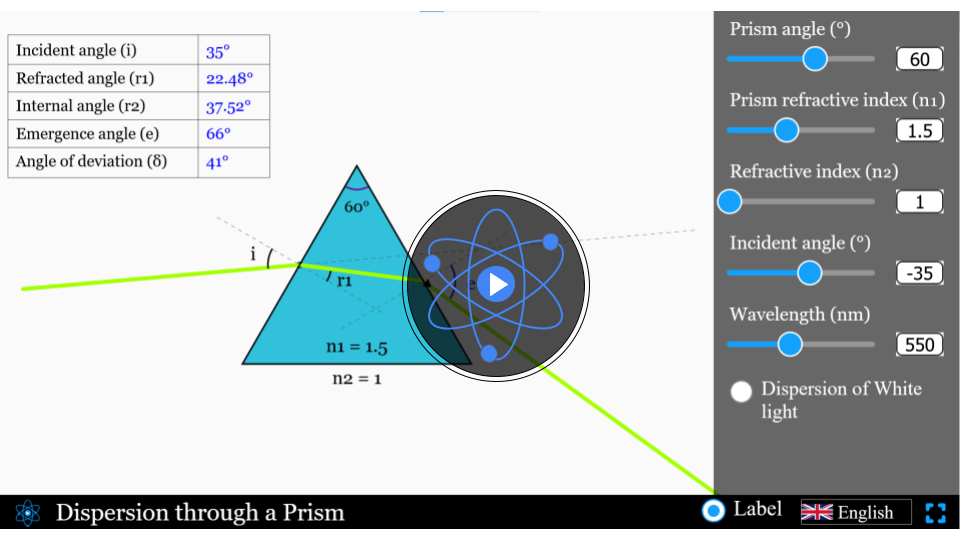Lateral shift in a glass slab simulator
Explore the concept of lateral shift in a glass slab and experiment with different angles of incidence to observe how light shifts as it passes through the slab using our interactive simulator.
Lateral shift in a glass slab
Light doesn’t always travel in a straight line—it can shift as it passes through transparent materials. When light enters a glass slab at an angle, it experiences a “lateral shift,” emerging from the slab slightly displaced from its original path. This fascinating effect is all around us, though often unnoticed.
With our interactive lateral shift simulator, you can explore how the thickness of the slab, the angle of incidence, and the refractive index influence the amount of lateral shift. Dive into this optical phenomenon and discover how light behaves as it navigates different media—start experimenting with lateral shift today!
\(\Delta x =\frac{tsin(\theta_{1}-\theta_{2})}{cos(\theta_{2})}
\)
Mathematical description
The lateral shift formula calculates the sideways displacement of light passing through a glass slab.
where:
- \( \Delta x \) is the lateral shift of light passing through glass slab
- \( \theta_{1} \) is the angle of incidence
- \( \theta_{2} \) is the angle of refraction
- \( t\) is the thickness of slab
Tutorial video
Take a quick spin through our simulator!
Simulator
Dive into the physics of lateral shift of transmitting light through a glass slab with our interactive simulator!
Interactive Physics Simulator – Lateral Shift in Glass Slab
🌟 You May Also Like
Suggested experiments and activities based on your progress...
FAQs on Lateral shift in glass slab
Qus 1. Why does lateral shift occur in a glass slab?
Lateral shift occurs due to the bending of light (refraction) when it enters and exits the glass slab at an angle. The change in the speed of light as it transitions between air and glass causes the deviation, leading to the observed displacement.
Qus 2. What factors affect lateral shift in a glass slab?
The lateral shift depends on three key factors:
- The thickness of the glass slab: A thicker slab causes a greater shift.
- The angle of incidence: Higher angles result in more displacement.
- The refractive index of the glass: A higher refractive index increases the shift.
Qus 3. What is the significance of lateral shift in optics?
Lateral shift helps in understanding light refraction and the properties of transparent materials. It is crucial in designing optical devices like lenses, prisms, and fiber optics, where light manipulation is essential.
Qus 4. What is the relationship between lateral shift and slab thickness?
Lateral shift is directly proportional to the thickness of the glass slab. As the slab becomes thicker, the path of the refracted ray inside the glass increases, leading to a greater horizontal displacement.
Qus 5. Why is the emergent ray parallel to the incident ray in a glass slab?
The emergent ray is parallel to the incident ray because the glass slab has parallel sides. The bending of light occurs symmetrically at entry and exit, canceling out angular deviation but leaving a lateral displacement.
Qus 6. Can lateral shift occur if the light ray is perpendicular to the glass slab?
No, lateral shift does not occur when the light ray is perpendicular to the glass slab. In such cases, the ray passes straight through without bending, as there is no angular refraction at the surfaces.




